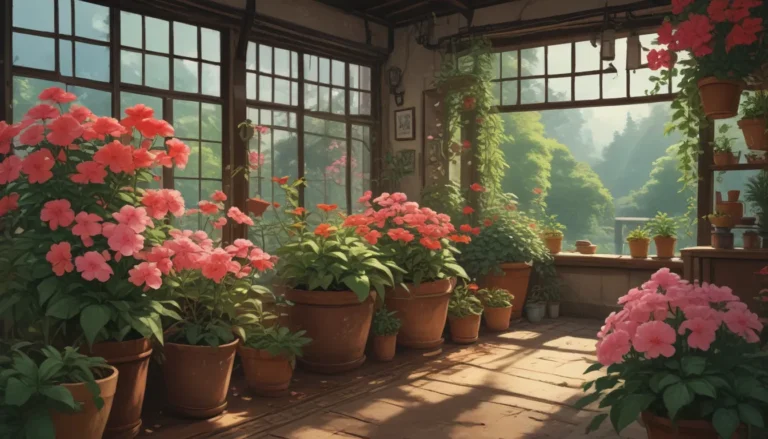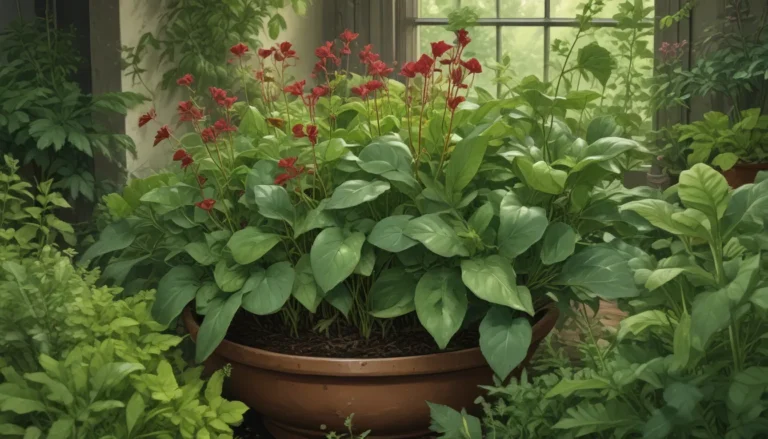A Comprehensive Guide to Growing and Caring for Evening Primrose

Oenothera spp.
Are you looking to add a touch of beauty and resilience to your garden? Evening primroses might just be the perfect addition. These stunning flowers, with their unique late-day blooms, are not only aesthetically pleasing but also relatively easy to care for. Whether you are a seasoned gardener or a beginner, evening primroses are an excellent choice to consider.
In this detailed guide, we will cover everything you need to know about growing and caring for evening primroses. From propagation to maintenance, species selection, and pest management, we’ve got you covered. So, let’s dive in and explore the wonderful world of evening primroses together.
What Are Evening Primroses?
Evening primroses belong to the Oenothera genus, consisting of about 145 species of herbaceous flowers. These vibrant blooms, also known as coffee plants and golden candlesticks, are native to North and South America, with some species naturalizing in Europe and other parts of the world. Known for their resilience and stunning flowers in various hues, evening primroses are a popular choice for many gardeners.
These flowers get their name from their habit of blooming late in the day and staying open until mid-morning the following day, attracting pollinators like moths and vespertine bees. With their large goblet-like flowers and diverse colors, evening primroses are a delightful addition to any garden setting.
Whether you are looking for a tall, upright variety or a low-growing ground cover, there is an evening primrose species to suit your needs. From fragrant blooms to non-scented varieties, these flowers offer a range of options for gardening enthusiasts.
Cultivation and History
Apart from their ornamental value, evening primroses have been used for various purposes throughout history. Native Americans used parts of these plants for food, medicinal treatments, and other practical purposes. The roots of Oenothera biennis, in particular, were known for their healing properties, making them a valuable resource in traditional medicine.
The rich history of evening primroses extends to Europe, where these plants were introduced in the 1600s and found diverse medicinal applications. The oil extracted from the seeds of O. biennis is now marketed for treating a range of conditions, thanks to its beneficial properties. From skin issues to chronic diseases, evening primrose oil has become a popular supplement in modern wellness practices.
Interestingly, evening primroses have also made significant contributions to scientific knowledge. The work of Dutch botanist Hugo de Vries on Oenothera genetics and mutations paved the way for revolutionary ideas in evolutionary science. By observing the unique genetic behaviors of evening primroses, de Vries proposed a new theory of mutations, challenging existing evolutionary concepts and guiding future research in the field.
Evening Primrose Plant Propagation
If you’re looking to cultivate your own evening primroses, there are several methods you can use for propagation. Whether you prefer starting from seeds, divisions, or transplants, each approach offers unique benefits for growing these beautiful flowers in your garden.
From Seed
Sowing seeds is a common and effective way to propagate evening primroses. To harvest seeds for sowing, you’ll need to collect mature fruits and extract the seeds carefully. By following proper seed collection and sowing techniques, you can ensure successful germination and healthy plant growth.
From Divisions
For some species of evening primroses, dividing established plants can be a quick and efficient way to propagate new specimens. By carefully separating plant sections and transplanting them into suitable locations, you can expand your garden with minimal effort.
Via Transplanting
Transplanting is another method to propagate evening primroses, allowing you to move existing plants to new locations or containers as needed. By preparing the soil and root systems properly, you can ensure successful establishment and growth of transplanted specimens.
How to Grow Evening Primrose Flowers
When it comes to growing evening primroses, there are several key factors to consider for optimal plant health and blooming. From climate and exposure requirements to soil and water needs, understanding the growing conditions for these flowers is essential for successful gardening.
Climate and Exposure Needs
Evening primroses thrive in a wide range of climates, from USDA Zones 3 to 11, making them suitable for various regions. Providing full sun to partial shade, depending on the species, allows these flowers to flourish and bloom vibrantly.
Soil and Water Needs
Well-draining soils with a pH range of 6.0 to 7.0 are ideal for evening primroses, although they can tolerate higher pH levels. Adding organic matter to the soil and maintaining adequate moisture levels help promote healthy growth and flowering in these plants.
Growing Tips
To help your evening primroses thrive, consider the following tips:
- Provide full sun to partial shade, depending on the species.
- Ensure well-draining soil for optimal root health.
- Water regularly to maintain soil moisture levels.
Pruning and Maintenance
To keep your evening primroses in top condition, regular pruning and maintenance are essential. Deadheading spent blooms, adding mulch for moisture retention, and controlling aggressive growth are key practices to ensure healthy and attractive plants.
Evening Primrose Species to Select
With a wide variety of evening primrose species available, choosing the right ones for your garden can be a fun and rewarding experience. From common varieties like O. biennis to unique species like O. speciosa, there are numerous options to suit different preferences and gardening styles.
- Common Evening Primrose (O. biennis): A tall biennial with lemon-yellow flowers.
- Mexican Evening Primrose (O. berlandieri): A spreading perennial with pink to white flowers.
- Missouri Evening Primrose (O. macrocarpa): A low-profile perennial with yellow blooms.
- Showy Evening Primrose (O. speciosa): A visually striking species with white to rosy pink flowers.
By selecting the right evening primrose species for your garden, you can enhance its beauty and diversity while enjoying the unique characteristics of each plant.
Managing Pests and Disease
While evening primroses are relatively resistant to pests and diseases, there are some common issues to watch out for. Insect pests like leafhoppers, lygus bugs, and Japanese beetles can occasionally affect these plants, requiring proper monitoring and control measures. Additionally, diseases like leaf spot, powdery mildew, and root rot can occur under certain conditions, necessitating proactive management strategies to protect your evening primroses.
By staying vigilant and implementing preventive measures, you can keep your evening primroses healthy and thriving throughout the growing season.
Best Uses for Evening Primrose Flowers
Evening primroses serve multiple purposes in the garden, from ornamental displays to medicinal and culinary applications. Whether you use them as borders, containers, cut flowers, or ground covers, these versatile plants offer a range of options for creative gardening endeavors. While caution is advised when using them for medicinal or culinary purposes, evening primrose flowers can add beauty and functionality to your outdoor space.
Conclusion
In conclusion, evening primroses are a delightful addition to any garden setting, offering beauty, resilience, and versatility in one package. By following the guidelines outlined in this comprehensive guide, you can grow and care for these stunning flowers with confidence and success. From propagation to maintenance, species selection, and pest management, evening primroses offer endless possibilities for creative gardening enthusiasts.
So why wait any longer? Take the plunge and add some evening primroses to your garden today. Your landscape will thank you for it!
Do you have any stories or questions about growing evening primroses? Share your thoughts in the comments below. Happy gardening!





